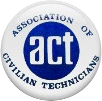The Office of Personnel Management (OPM) has released Flexibilities and Authorities for Federal Employees Affected by the Zika Virus. The below memorandum can be found at: https://www.chcoc.gov/content/human-resources-flexibilities-and-authorities-federal-employees-affected-zika-virus
Friday, September 16, 2016
CPM 2016-13
From: BETH F. COBERT, ACTING DIRECTOR
The World Health Organization has declared the Zika virus to be a “public health emergency of international concern” (www.who.int/mediacentre/news/statements/2016/emergency-committee-zika-microcephaly/en/). President Obama has emphasized that “We all have to remain vigilant when it comes to combating the spread of diseases like Zika.” (www.whitehouse.gov/zika) The Zika virus is spread primarily through the bites of infected mosquitoes—the same types of mosquitoes that spread other viruses like dengue and chikungunya. While most people have mild or no symptoms from a Zika infection, the Centers for Disease Control and Prevention (CDC) has established a link between Zika infection during pregnancy and serious birth defects and other poor pregnancy outcomes. We also know that there can be other serious neurological disorders for some people who are infected with Zika.
As the Zika virus spreads into certain parts of the United States, we must remember that our Federal workforce is our most valuable resource and take steps to minimize the impact of the Zika virus on our employees while continuing to ensure continuity of operations. Agencies are strongly encouraged to utilize all available human resources flexibilities, along with providing workplace accommodations, if appropriate, to support employees who have a significant risk of a severe outcome due to contracting the Zika virus—for example, female employees who are pregnant.
The U.S. Office of Personnel Management (OPM) has convened a working group of agency representatives that will meet regularly to discuss the developing situation and support OPM efforts to provide agencies and employees with current information and guidance related to the Zika virus. As a first step, this interagency working group was involved in the drafting of this memorandum. The interagency working group will continue to monitor developments related to the Zika virus and support OPM in issuing additional guidance as necessary. OPM will also communicate with the Chief Human Capital Officers and national labor unions concerning the impact of the Zika virus on the Federal workforce.
This memorandum has three attachments providing information and/or guidance from OPM, the Equal Employment Opportunity Commission (EEOC), and the Occupational Safety and Health Administration (OSHA). They present current guidance on protecting workers from occupational exposure to the Zika virus and remind the Federal community of the various human resources flexibilities and authorities that may be available to help affected Federal employees. The attachments are as follows:
Attachment 1 – OPM Guidance on Workplace Flexibilities and Authorities for Dealing with the Zika Virus
This attachment provides information regarding the various workplace flexibilities and authorities available to assist Federal employees affected by the Zika virus, including leave and telework.
Attachment 2 – EEOC: The EEO Laws for Employees Affected by the Zika Virus
This resource document discusses workplace issues that may arise under the laws the EEOC enforces, particularly in situations where pregnant employees ask for accommodations to avoid exposure to the virus or employees ask for accommodations related to symptoms of the virus.
Attachment 3 – OSHA Zika Job Hazard Analysis for Federal Agencies
This attachment provides a template to help Federal agencies develop job hazard analyses and hazard control strategies to protect their workers from occupational exposure to the Zika virus.
While no Zika vaccine currently exists, there are several ways for Federal employees to protect themselves from mosquito bites, including using insect repellents with Environmental Protection Agency-registered active ingredients, wearing long-sleeved shirts and long pants, and removing sources of standing water whenever possible. For more prevention tips and the latest updates on Zika, please visit the CDC’s website at www.cdc.gov/zika/, OSHA’s website at www.osha.gov/zika/,andthe National Institute for Occupational Safety and Health’s (NIOSH) website at www.cdc.gov/niosh/zika/.
Finally, OPM would like to remind agencies considering work-related travel to Zika-affected areas to use appropriate flexibility to accomplish the necessary work using alternate means, such as teleconferencing, whenever possible. Supervisors should carefully consider requests from employees who wish to opt out of this travel, and/or solicit qualified volunteers if travel is necessary. For more information, please see OPM’s memorandum (CPM 2016-04) at https://www.chcoc.gov/content/notification-cdc-travel-alert-regarding-zika-virus.
Additional Information
Agency headquarters-level human resources offices may contact OPM at pay-leave-policy@opm.gov. Agency field offices should contact their appropriate headquarters-level agency human resources office. Individual employees should contact their agency human resources office.
Attachments (see three PDFs below)
cc: Chief Human Capital Officers, and Human Resources Directors
Attachment(s):
Attachment 1 - OPM Guidance on Workplace Flexibilities and Authorities f....pdf
Attachment 2 - EEO LAWS FOR EMPLOYEES AFFECTED BY THE ZIKA VIRUS - EEOC.pdf
Attachment 3 - OSHA Zika Job Hazard Analysis Template (9-9-16) v02.pdf
